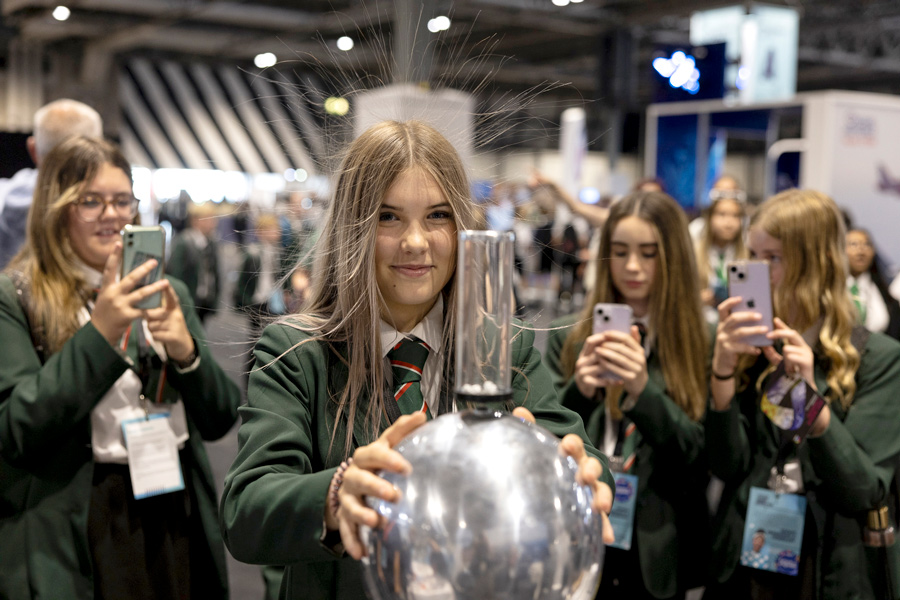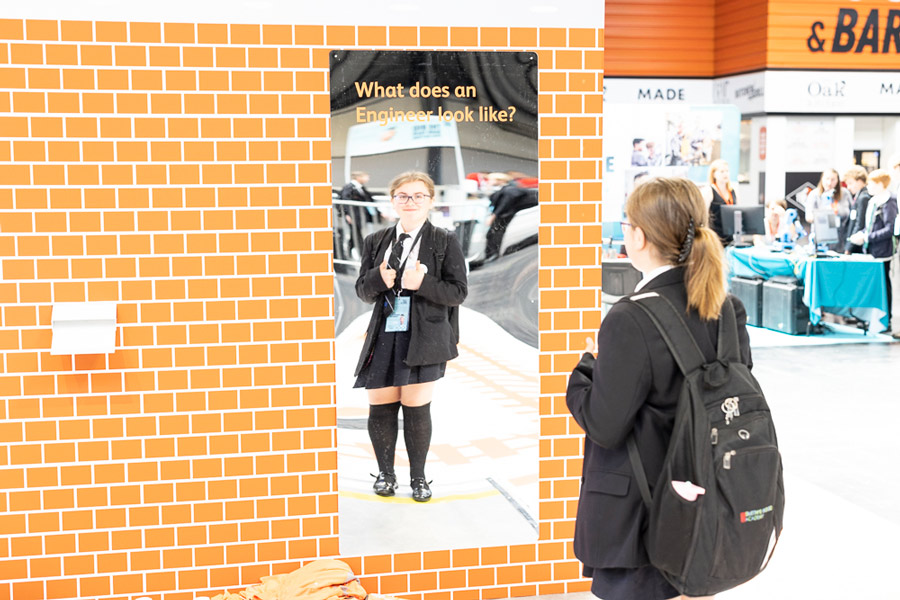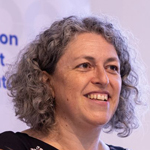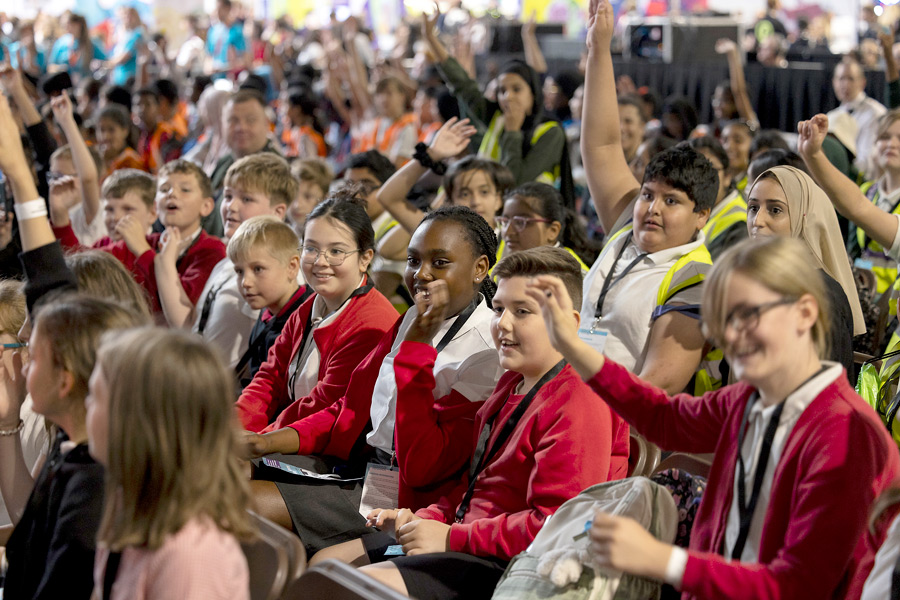EngineeringUK and The Big Bang Fair: Inspiring the next generation of STEM researchers
EngineeringUK seeks to promote engineering in all its facets. As part of this overarching mission, it runs the annual Big Bang Fair, a highly successful celebration of STEM research, aimed at 11–14 year-old students from across the UK. This year, thousands of young people gathered at the NEC in Birmingham, where they were presented with an array of installations, activities, guest speakers, and career advice. Research Outreach caught up with Dr Hilary Leevers, Chief Executive of EngineeringUK, about The Fair, The Big Bang Competition, and the future of youth science.
Can you introduce us to your work with EngineeringUK?
EngineeringUK focuses on inspiring the next generation into engineering and technology careers. For decades, we’ve had concerns about workforce shortages in those areas – that are only growing. We know that it is a critical workforce, particularly for the delivery of net-zero, but also across the research agenda; especially as the country is striving to build up its science and innovation base. If we don’t secure that workforce, this is not going to be achievable. When I talk about workforce shortages, it isn’t just a numerical shortage – but actually a shortage of diversity – which is particularly pronounced in engineering and tech, as compared with other areas of STEM.
We know that means that we fall short, not just on numbers, but on that breadth of ideas that comes from having people who have diverse experiences and backgrounds. It also means that the research agenda isn’t controlled by the full breadth of the population. I think it’s really important that we’re responsive to people’s greatest needs. If only a small proportion of society controls that agenda – or a small demographic – I think that’s also a shortcoming.

Could you tell us about The Big Bang Competition’s UK Young Engineer of the Year Award?
Every year we run The Big Bang Competition. This year, we are celebrating the success of Avye Couloute, who is a year nine student who has come up with this wonderful project. It was selected by the judges as the best project for engineering, and it showcases how someone has identified a societal problem that they feel personally invested in, then really iterated and worked up a solution for it. I think many of our competition entries demonstrated this. It highlights the altruistic drive that a lot of young people have. A lot of the project entries are motivated by people who mean something to them, people with disabilities in their family, for example, or with particular geographic needs, or wider societal issues like new medical technologies and environmental sustainability.
Avye picked up on health, and also an element of environmental sustainability, in building this very elegant and aesthetic pavilion – a pop-up space, which could be used for all sorts of working or teaching or eating. It’s a flexible workspace that is fitted with carbon dioxide monitors, enabling people to be confident about the airflow in their environment. It reflects that to the people in the space: using green lights if it’s all okay; red lights if the carbon dioxide density is getting too great, suggesting that there isn’t sufficient airflow to control infection, and then there’s a shutter system that opens up to increase the airflow. You can see how this could also be adapted for environmental and ventilation reasons. So, it’s a beautiful project to look at, but also very well-conceived.
Avye is a year nine student! It’s incredibly inspiring, isn’t it?
100%. Avye has also been involved in tech and digital skills and projects for many years, and actually in doing her own outreach, and we see that peer-to-peer inspiration can be very powerful.
There was a palpable – and audible – sense of excitement from the students on the show floor.
Did you sense a good deal of excitement amongst students and young scientists at this year’s Big Bang Fair?
Yes, there was a palpable – and audible – sense of excitement from the students on the show floor. And while that is what we always see at The Big Bang Fair, it felt particularly strong this year. Actually, it was very emotional, bringing so many students together with so many exciting and engaging opportunities for them post-pandemic, when we know that so many of them won’t have had these experiences before. So, it felt particularly powerful for us this year.

Just to build on that, we know that practical and hands-on experiences are especially engaging for students, through the work they do in classrooms, as well as in outside outreach and engagement. But the amount of practical work in schools has been declining, and this was before the pandemic impacted. We are just so keen to make sure that those opportunities come back because young people say they find them very motivating. And they’re also learning the real practical skills that many people in research need. If you’re not getting them at a basic level, and also testing whether those are the sorts of things you might want to be doing in a future career, I think we’re really not giving students a rounded experience.
Do you feel optimistic about the future of youth science in the UK?
Well, I just sounded a bit sad in my previous answer about needing to have more practical hands-on interaction – and there is a real need there – but, actually, the young people themselves are so inspiring. All their competition entries were so engaging. Seeing the determination and persistence with which young people have been trying to address problems – we simply need them. We need that drive in the future workforce at a societal level to address the Sustainable Development Goals and all sorts of other challenges.
I am optimistic because of young people’s engagement and enthusiasm. We just need to make sure they get a good understanding of what the opportunities are and that they’re presented in a way that is inclusive. So, we don’t just give people the WOW science moment, we give them the ‘you could be doing this, you are wanted, and this is how you can get there’. You know, there’s such a breadth of opportunity and so many entry points that everybody should see the opportunity to be included.
Recent surveys have found that social media is increasingly important in attracting students to STEM. Could you say a little more about how young people are finding inspiration through the internet?
Organically, I would say. It’s so interesting that this is an area where organisations, and ‘grown-ups’, I think are less impactful than things that just are happening organically – and that peer-to-peer influence is very powerful. So, you can see a lot of the young YouTubers or podcasters, who are just talking very passionately about what they’re finding interesting, creating a real ripple effect outwards.
That said, there are some great organised programmes: This is Engineering is a campaign run by the Royal Academy of Engineering, which we and many others support, to showcase contemporary engineering and the diversity of people working across it to young people and the people that influence them. We know that there are still a lot of outdated misconceptions and stereotypes about what engineering is and who can do it.

There is some great content there, which we try and seed through various channels. But it also happens organically, as I said. For all the incredible reach and inclusiveness of those channels, it’s still so important to have face-to-face interactions, as we know that those are more impactful and can enable tailored conversations between someone who is in a career and someone who may be aspiring towards it. That’s really important as well.
What other events does EngineeringUK run to spread the word about STEM careers?
We have a whole suite of Big Bang excitement! We have the main national Big Bang Fair, which is the flagship event; that happened in June at the NEC. We also run a Big Bang at Schools programme, where we help schools run STEM careers days, sometimes mini-careers fairs, enabling young people to connect with role models, often with shows or workshops and things like that. We are hoping to work with more than 50 schools this year, running from The Orkney Islands down to Plymouth, right across the UK. That means that schools that aren’t able to get to the Big Bang Fair can do something more locally, and we’re looking to expand that programme.
We also have a digital set of resources. We live-streamed some of the events from the Big Bang Fair as well. So, we’re always trying to extend our reach. We also have some more in-depth programmes, like Robotics Challenge, which is a coding and digital programme, as well as Energy Quest, which is a workshop all about renewable energy.
But I wouldn’t want you to think that EngineeringUK was the only organisation out there doing these things. We work to support the sector as a whole. If anybody’s interested in knowing more, we have a platform – Neon – which lists all STEM outreach and activities that people have brought to us that include contemporary engineering and tech content. It’s tagged really well so that teachers can find what they need most effectively. Neon was launched just under two years ago, but we’ve already got over half of all secondary schools using it; that includes using Neon for careers resources, and case studies. So, we’re really pleased about that.
If anyone wants to get involved, they could support one of the programmes listed on Neon; they could see if there are ways that they could volunteer with them, including through the STEM Ambassador programme, or just use some of the resources that are available for help people with their own delivery.

What other ways can our readers get involved with these events?
I encourage anyone with a passion to get involved to reach out to young people and think about who they’re talking to, making sure that they are being inclusive and thoughtful in what they are saying and the images that they might be using (This is Engineering has an image library to support that). We need more young people to feel like they’ve got a connection, they’ve had a conversation, about STEM, and for us particularly, about engineering and technology.
We have many more formal mechanisms and opportunities: they can volunteer with us at The Big Bang Fair or for many of our other programmes; they can support our social campaigns like Tomorrow’s Engineers Week that will be coming in November; or the This is Engineering campaign, which includes a special day run by the Royal Academy of Engineering; or just help with the social engagement that happens around things like International Women in Engineering Day.
So, I now can say, hand on heart, to young people we work with: you’re really wanted.
We see a lot of organisations supporting STEM Ambassadors by forming a network, getting engagement into their organisational strategy and enabling their employees to volunteer and play their part in bringing the next generation into the workforce.
We’d really like to see better representation of research institutions and universities in the work that we do. So, we’re always open to conversations; we have some universities showcasing their research at The Fair, but it’s an area we can really grow. At the moment, I think we’re a bit too heavily weighted towards industry, and we could be more proportionate with the research that’s going on outside of industry.
Young people also really want STEM work experience. There are currently three times as many people who want it as are able to get it. So, please take any opportunity to offer that, and again, think about who you’re offering it to and how you can make the biggest difference by reaching those who might not otherwise have that opportunity. There’s going to be a huge expansion in the demand for work placements with new vocational qualifications, into the tens of thousands over the coming years. Having organisations thinking about how they can support this is therefore really important.

For anyone who’s interested in doing more, we have a resource hub called Tomorrow’s Engineers, which is full of support. It isn’t just the resources – it suggests the sorts of content you might want to use, the sorts of messages that are important to convey, how you might identify schools to work with and, importantly, how you might get a sense of whether what you’re doing is doing what you would like it to do!
Any organisation that is interested in engagement could also join The Tomorrow’s Engineers Code, a proactive network which we launched about 18 months ago, and has 200 organisations, including universities, all working together to try and improve our collective impact. So, I am optimistic about the future. But we need this level of coordination and commitment to meet the difference we want to make.
We love your optimistic roadmap on how we can diversify engineering, but is there still a persistent homogeneity in terms of who thinks they can enter an engineering career path?
Yes, but actually, those numbers are improving! When we look at the workforce numbers, they’re improving; when we look at the flow into the workforce, they are also improving. It takes a lot of effort and thought to make that difference, but I don’t want people to be discouraged. One of the things that I find most encouraging isn’t just the supply side – that young people are showing more interest and young people from more varied demographic backgrounds are recognising opportunities – but comes from the work that we do with industry partners and universities. We see their commitment in this area is growing and growing. It’s so sincere. So, I now can say, hand on heart, to young people we work with: you’re really wanted. Don’t look at the workforce of 20 years ago and think there isn’t a place for me. These organisations are striving so hard and making great progress to be more flexible and inclusive. Please, please give them a chance.